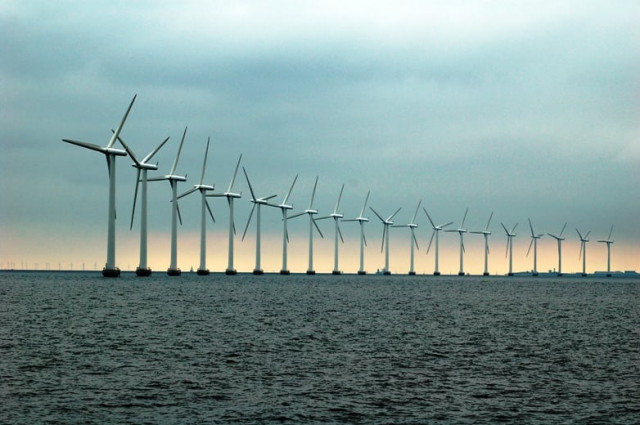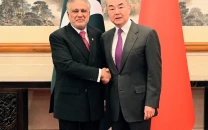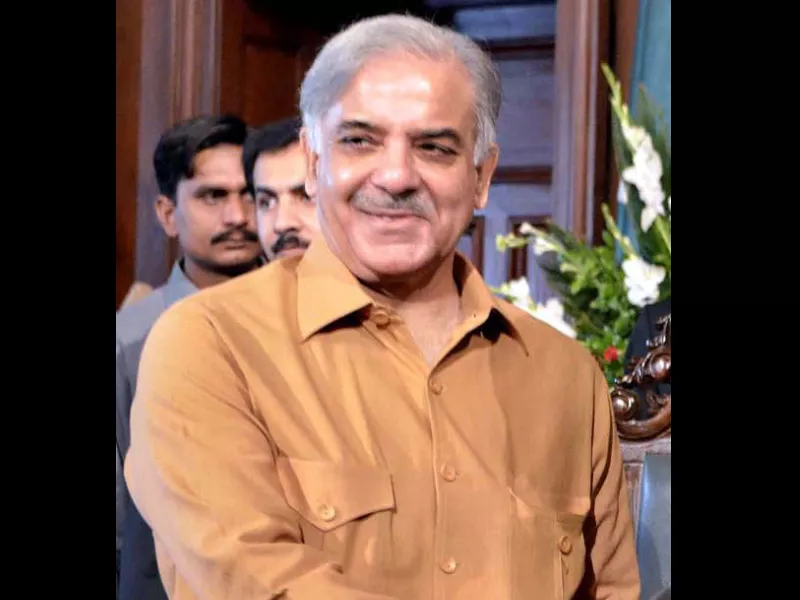Power ministry seeks more subsidy to settle circular debt
Entire allocation has been consumed; energy firms face risk of default

Entire allocation has been consumed; energy firms face risk of default
PHOTO: EXPRESS
“The entire subsidy earmarked for electricity consumers in the current fiscal year has been consumed and the power ministry has nothing to retire debt in the energy chain,” said an official aware of the development.
Energy projects with Germany: Shehbaz vows to increase cooperation
“The finance secretary has held a meeting to review the situation of inter-corporate debt.”
Over the past few days, independent power producers (IPPs) have been warning the government that they will invoke sovereign guarantees if their dues are not settled.
At the end of January this year, the circular debt amounted to roughly Rs370 billion, up Rs50 billion over the past seven months, power ministry sources said.
In the previous fiscal year, subsidy payments had jumped to Rs196.54 billion compared to the target of Rs137.6 billion. According to current year’s budget documents, Rs95.4 billion had been set aside for subsidising the power industry, excluding K-Electric.
In addition to consuming the subsidy, the government has slapped different types of surcharges on power consumers, which the power ministry claims have eased pressure on federal finances.
According to the official, receivables of Pakistan State Oil (PSO) - the state-owned oil marketing giant - had gone up to Rs280 billion whereas the Ministry of Finance released only Rs20 billion. Power producers are major defaulters as they owe PSO Rs228 billion.
“Secretaries of water and power, and petroleum had reached an understanding that current bills of PSO against power producers would be cleared, but it did not happen. Now, these dues have gone up to Rs19 billion,” the official said.
In a high-level meeting held at the Ministry of Water and Power, the power sector pointed out that the government had slashed subsidy for the ongoing fiscal year, which had been consumed and nothing was left to pay off the debt.
The ministry also admitted before economic managers that a large part of the power subsidy was paid out of the tariff rationalisation surcharge collected from the consumers.
Power subsidy stands above Rs100 billion every year and a major chunk of it is contributed by the consumers themselves.
They also pay over Rs200 billion in a year due to surcharges and high benchmark transmission and distribution losses set by the National Electric Power Regulatory Authority (Nepra).
The power ministry, in a meeting of the Economic Coordination Committee (ECC) held on February 13, revealed that 2014-15 and 2015-16 were the only fiscal years in the past more than a decade when no losses of the power sector, which used to be on overage Rs200 billion per year, were covered from the federal budget.
That brought down the power sector’s burden on national budget from 2.4% of gross domestic product in 2012-13 to around 0.7% in 2014-15.
The ministry pointed out that the other stream of cash flow into the power sector was the release of subsidies from federal budget. However, a large part of the subsidy burden eased after the imposition of tariff rationalisation surcharge on high-end consumers.
Some reconciliation process was going on between the power and finance ministries over the subsidy claims and arrears, which were expected to be settled in coming months.
Alternative energy: 15,000 schools to go solar
According to the ministry, the power sector has shown marked improvement in its performance over the past two years. Its recoveries improved from 88-89% to 93% in 2016, the highest in history.
Similarly, transmission and distribution losses, which stood around 19% in 2014, came down to 17.8% in December 2016.
These led to a positive growth in cash flow totalling Rs116 billion in the past two years. Generation companies, which suffered a cumulative loss of Rs7.78 billion in 2013-14, overcame the loss and reported net profit of Rs5.77 billion in 2015-16.
Published in The Express Tribune, March 8th, 2017.
Like Business on Facebook, follow @TribuneBiz on Twitter to stay informed and join in the conversation.



















COMMENTS
Comments are moderated and generally will be posted if they are on-topic and not abusive.
For more information, please see our Comments FAQ